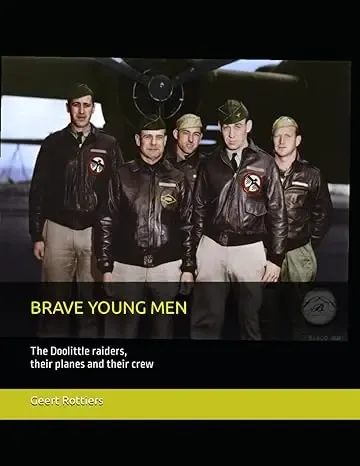Raider in the spotlight
Army pilots, man your planes!
Army pilots, man your planes!
The take off of the 16 B-25 medium bombers from the flight deck of the USS Hornet.
Vice Admiral Halsey had no choice but to order the USS Hornet to let the sixteen B-25 bombers take off after being discovered.
A message was flashed to the USS Hornet, "Let the planes take off right now, Colonel Doolittle" and Halsey wished the brave command the best of lluck in their mission.
The command went out over the loudspeaker of the carrrier USS Hornet, "Army pilots, man your planes to take off immediately" (message by Marc Mitscher, Captain of the USS Hornet)
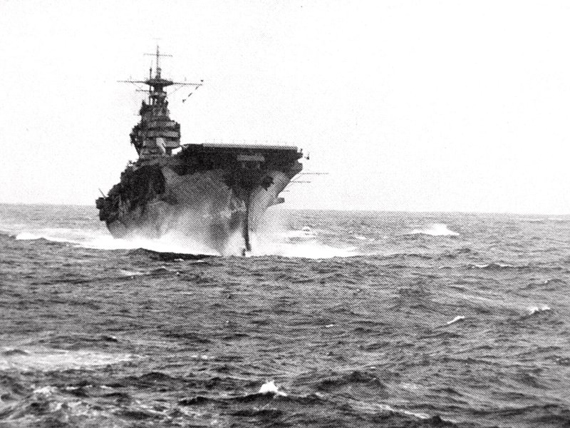
The army men now rush to the waiting planes and the crews of the respective bombers prepared for take-off. Crews and employees freed the bombers from the ropes that had tied them to the flight deck. The engines of the aircraft were freed from the protective cloths. Twenty-liter (or five gallons) petrol cans were handed to the gunners through the rear hatches. The final preparations were made and the planes were readied for take-off.
The aircraft had already been put in take-off order the night before. Doolittle was thefirst pilot (Crew 1) to take off with his B-25 from the aircraft carrier USS Hornet.
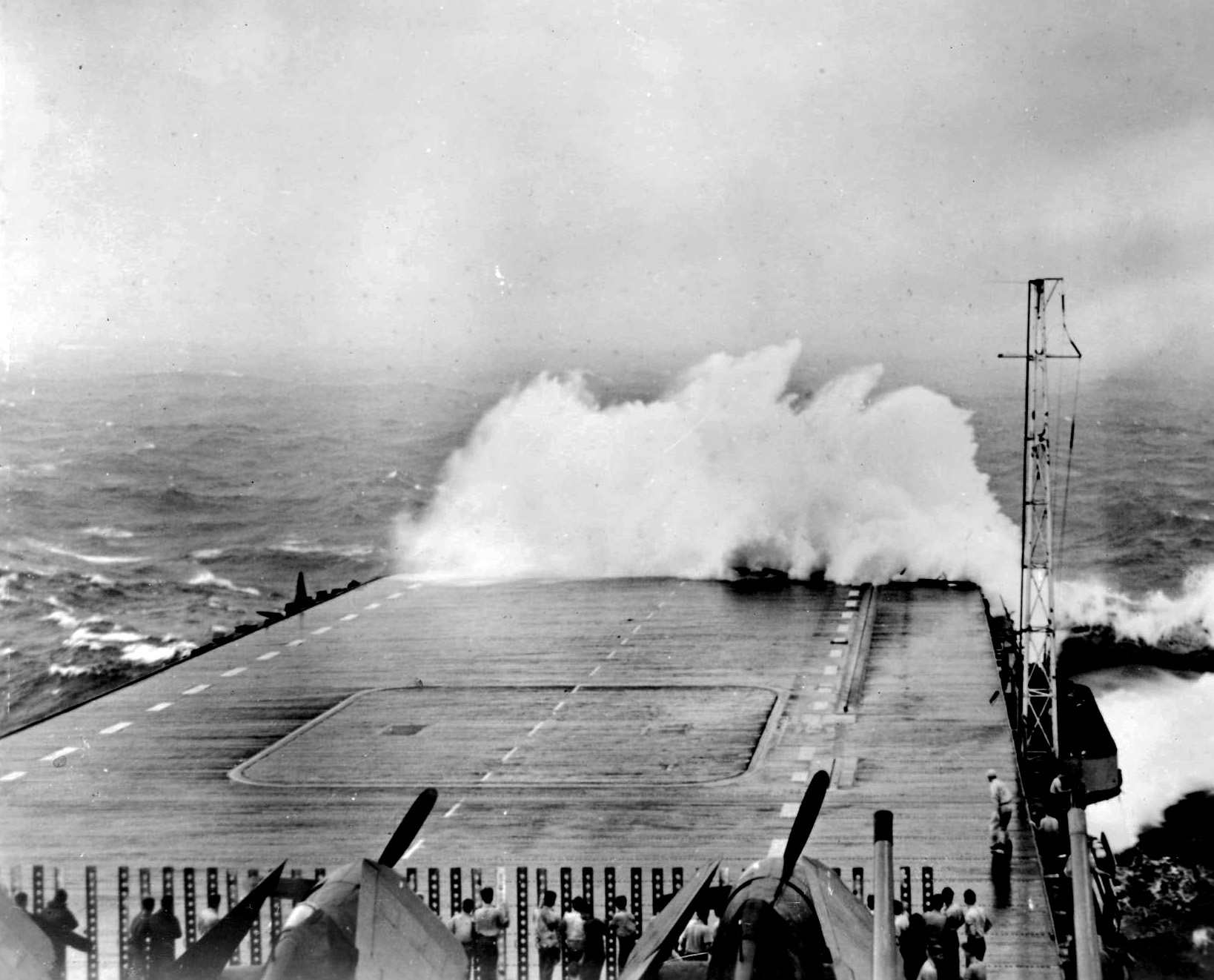
Unknowing how much preparation had gone into it, many sailors on other ships of Task Force 16 gambled on the success of the take-off. Many sailors lost a lot of
money that day because, as mentioned earlier, it was considered impossible to takeoff from an aircraft carrier with medium bombers.
The speed of the carriers and the storm winds combined to produce winds sometimes as high as 50 miles per hour blowing over the USS Hornet flight deck. The front of the USS Hornet bobbed wildly. The signal officer was to signal the aircraft to begin take-off when the USS Hornet began to dive past a wave. This would catapult the B-25 into the air during take-off from the USS Hornet. As the B-25 began to fly forward, the air filled with tension.
At the end of the carrier, Doolittles B-25 seemed to disappear into the sea as the USS Hornet bounced up again on the next wave. As the ship cleared the gulf, Doolittl;s plane appeared above the bow and a huge cheer erupted from the accompanying ships. The sailors could not believe what they saw and Lieutenant Henry -Hank- Miller was proud of the USAAF men. Jimmy Doolittle flew his bomberparallel to the USS Hornet to allow for possible correction of the magnetic compass.
The attack on Tokyo had begun.

Hank Miller
Doolittle knew they had had to take off too early to reach unoccupied China safely. They had to take off 10 hours earlier than planned and they still had to fly 1,312 km (or 820 miles). That was between 300 and 400 km (or between 190 and 250 miles) more than expected. The fuel would be insufficient now.
If it proved impossible to reach the Chinese coast, pilots were instructed not to divert to the Soviet Union, but to go as far east as possible, dump their planes at sea in the East China Sea, just before the Chinese coast and to paddle to the Chinese coast inthe provided dinghies. They could also sail to the coast of China by hijacking a yacht or boat at sea. This by making an emergency landing at sea close to the yacht orboat and hijacking it.
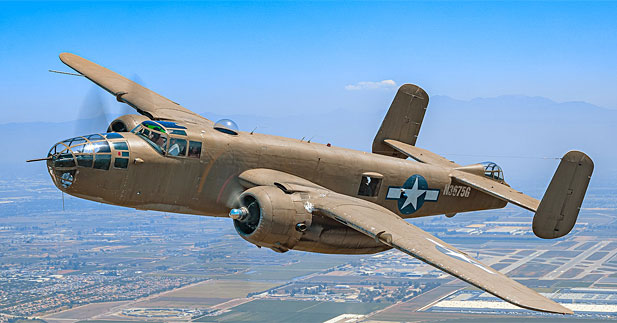
The takeoff location was 35°00 39.0.0 N 154°00.0 E = 35 40 N 153 40 E
Take-offs sequence of B-25 bombers from USS Hornet on April 18, 1942, between 8:30 AM and 9:18 AM. Ship time USS Hornet:
| Crew 01 - | 08.20 am |
| Crew 02 - | 08.25 am |
| Crew 03 - | 08.30 am |
| Crew 04 - | 08.33 am |
| Crew 05 - | 08.37 am |
| Crew 06 - | 08.40 am |
| Crew 07 - | 08.43 am |
| Crew 08 - | 08.46 am |
| Crew 09 - | 08.50 am |
| Crew 10 - | 08.53 am |
| Crew 11 - | 08.56 am |
| Crew 12 - | 08.59 am |
| Crew 13 - | 09.01 am |
| Crew 14 - | 09.07 am |
| Crew 15 - | 09.15 am |
| Crew 16 - | 09.19 am |
For more info on the crews and their fate after taking off from the USS Hornet and their actions above Japan, visit the link to the crew page of each crew.
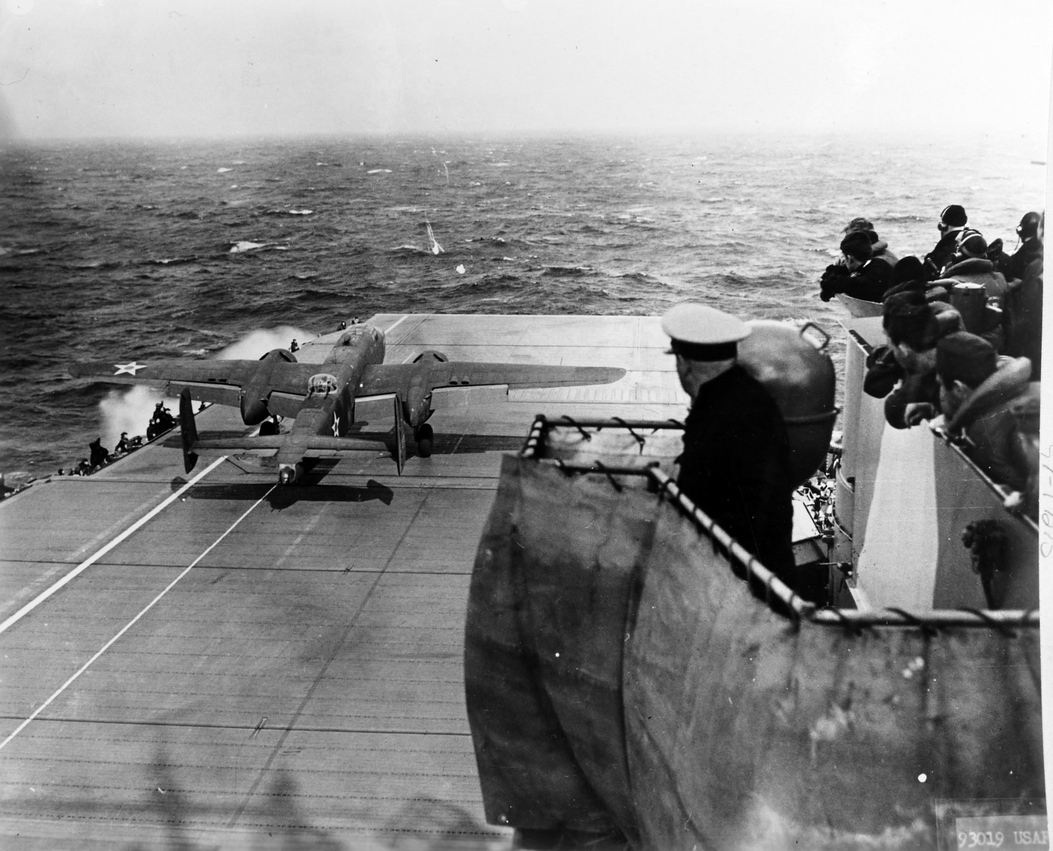

For your information and interesting to know.
Each plane has a special speed where it can achieve a lift off/take off. For the B-25 Mitchell bomber is this between 90 -120 knots. The USS Hornet turned into to wind before the take offs of the planes. Speed of the USS Hornet was 30 knots. This gave the pilots an advantage of 30 knots.
Pilot Jimmy Doolittle and the others took off with a wind of 20 knots over the flightdek of the USS Hornet. This gave the fliers a total advantage of 50 knots.
The fliers needed 40 more knots to take off. So, when the planes lift off/take off they were moving across the ground at 40 knots but the airspeed across the wings was 90 knots. Enough for them to take off.
All of the bombers had the same take-off distance of 467 feet or 142.34 meters. Fliers who took off behind Pilot Jimmy Doolittle taxied forward to the same spot as pilot Jimmy Doolittle started from. The reason they did this was to minimize the risk of hitting the carrier’s “island/bridge” on the take-off.
As far as how they took off, the pilots practiced techniques for getting the bomber B-25 Mitchell airborne in the shortest distance possible, also the bombers were specially lightened.
SUPPORT US ON PATREON
Please consider supporting us on Patreon for keeping this website online. Even $1 a month will go a long way. Thank you!
The Doolittle raiders, their planes
and there crew
by Mr. Geert Rottiers
Order your copy today and learn about the brave men who risked their lives to bring hope to America in the darkest days of World War II.












